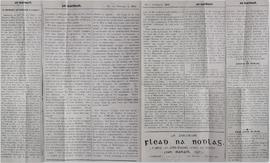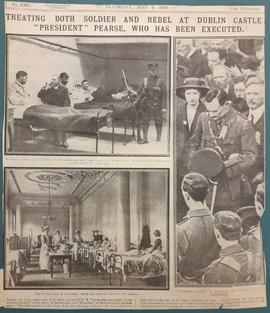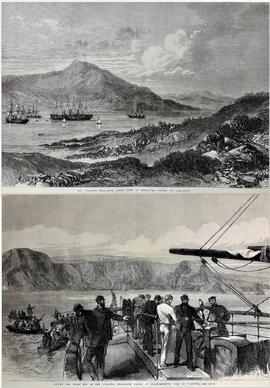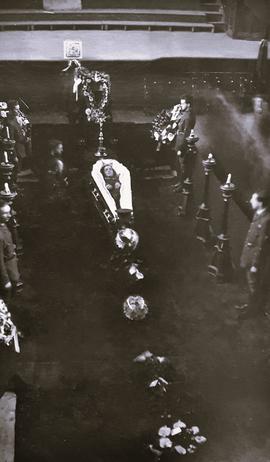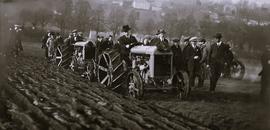- IE CA CP/3/16/4/18
- Part
- 13 May 1916
Part of Irish Capuchin Archives
A clipping of an article from the ‘Saturday Herald’ (13 May 1916) reflecting on the official war list of former students of Trinity College Dublin who enlisted in the British armed forces during the First World War. The article notes that of the 2,200 individuals on the list, 130 had thus far been killed in action or died of disease with a further 115 wounded. The paper makes specific reference to the service of former Trinity students in the 10th (Irish) Division which fought in the Gallipoli campaign, most notably at Suvla Bay and Anzac Cove, in 1915. The Lieutenant Francis Lynch featured in the article (centre) is very likely Second Lieutenant Francis William Lynch who was killed in action on 26 April 1915. Born in Dublin, he was the third son of Henry Lynch, of Seaview House in Donnybrook. In October 1913, he entered Trinity College, and became a member of the Officers Training Corps. On the outbreak of the war, he volunteered for service as a Special Reserve Officer, eventually joining the Connaught Rangers. He died while leading his platoon in an attempt to capture a German trench north of Ypres. He was nineteen years old. He was buried in La Brique Military Cemetery in Belgium.


